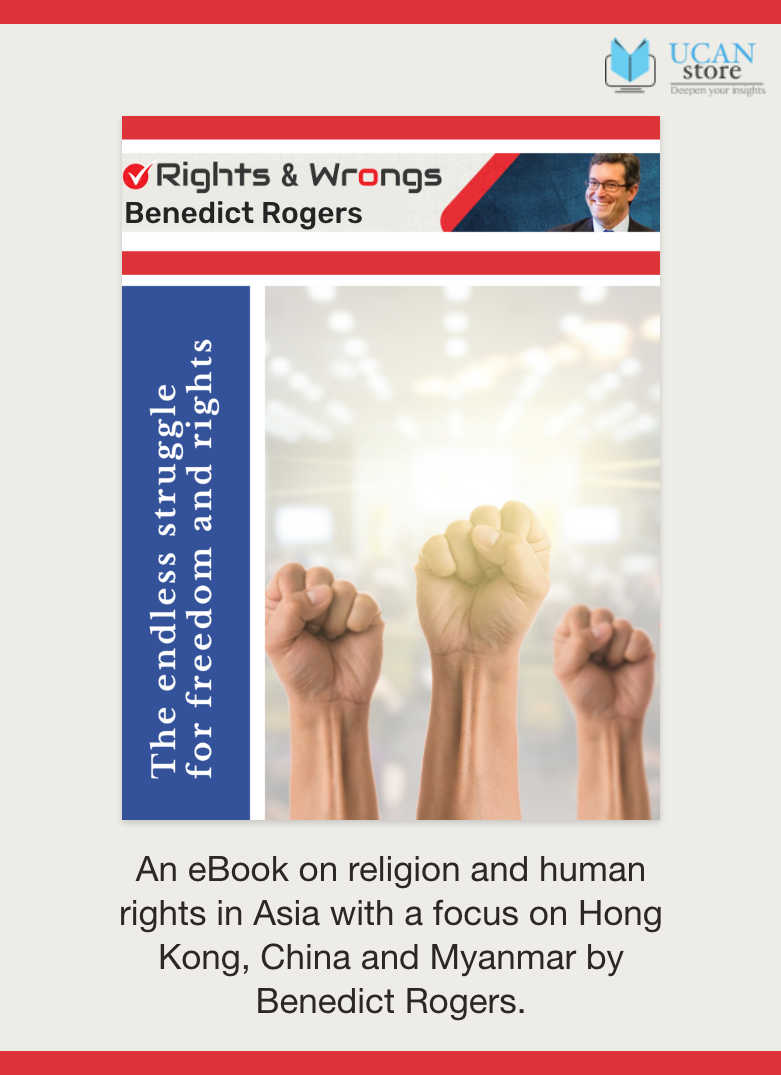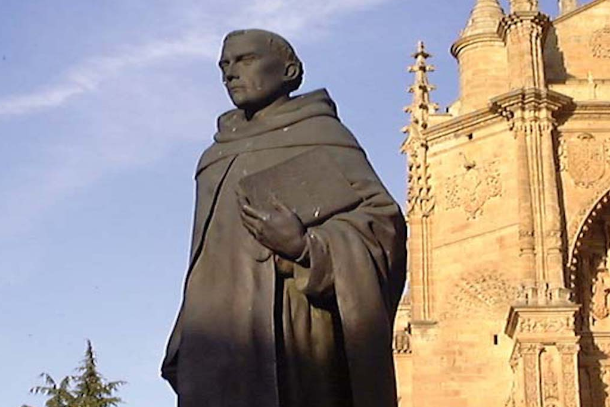
Engaging with Asia's great religions requires a keenly honed sense of what makes Christianity unique
Updated: November 16, 2022 11:50 AM GMT


Spanish theologian Francisco de Vitoria (1483-1546) was an early advocate of inculturation. (Photo: Wikimedia Commons)
Just over 100 years ago — 1919 to be exact — the Vatican made its most decisive move beyond using colonialism to foster Catholicism outside Europe and North America. In 1919, Pope Benedict XV published the first encyclical in the Church’s history on missionary activity — Maximum Illud.
Evangelii Gaudium (2013) is seen as the map or plan for the pontificate of Francis and in it this most evangelical of popes outlines what he sees as the meaning and purpose of the Church — mission. For that, he brings together many other contributions to the understanding of mission made by several of his predecessors, especially St. Paul VI.
But now he has taken that line of thought even deeper in his response to the Synod on the Amazon — Querida Amazonia — which some have called his “love poem” to the region.
It is a further development of a theme that used to be part of the reflections and programs of the Church in Asia — inculturation — until any progress on that subject was stalled at local levels by Rome during the pontificates of St. John Paul II and Benedict XVI.
There had been many voices urging this move for centuries, initially and most notably Francisco de Vitoria, the Spanish Dominican (1483-1546). It was de Vitoria who asserted that invading colonial powers Spain and Portugal had no right to the land and property of local people whom they colonized.
However, the Church across the world was still led mostly by Europeans. It took until 1926 for the first Chinese-born bishops to be ordained and the same applied across Asia and Africa — locals were overlooked, foreign missionaries became bishops, and sometimes imports from the colonial country whose government claimed the territory were made bishops. Now indigenous bishops are in office everywhere in the world.
But as even Vasco da Gama found when he rounded the Cape of Good Hope in 1488, a lot more happened than a change of direction — from heading south to heading north. He entered a completely different world of peoples, cultures, languages, habits, beliefs, histories.
Europe and the Catholic Church have been coming to terms with that for the last 400 years. And at times in those centuries, church leaders have been colossally self-destructive. The mess the Vatican made of the Chinese Rites controversy (about respect for ancestors among the Chinese) is well documented. Two aggravating and mutually uncomprehending parties met and both sides lost.
But there are other less visible instances of racism in church policies — the reluctance in many countries to ordain local candidates for the priesthood, the imposition of European habits and even dress codes on Asian Catholics, the complete failure to believe that Asian catechumens already had a sense of God and of right behavior in their own native belief systems and ethical codes. These failures all coalesced to make Christianity an alien intrusion into many Asia societies.
Flowering of Asian theological scholarship
Now the issue of how Catholicism and other religions engage and interact is back on the agenda in the clearest terms with Querida Amazonia from Pope Francis. The starting point for shaping the future of the Church in the region is to first listen, the pope says, to the rhythms of the people and their sense of God, to their ways of expressing how the divine lives and moves in them, what needs to be taken from their heritage if their Christian faith affirmations are to be authentic.
However, the Church in Asia has been here before and quite recently. The Eurocentrism began to be corrected after Vatican II and that moment of enlightenment continued until some time in the 1980s with a flowering of Asian theological scholarship addressing just what proclaiming the Gospel in the very different (from Europe and North America) circumstances might look like.
A great deal of that flowering was under the auspices of the Federation of Asian Bishops’ Conferences. But its work ground to a halt by 1990 because during the pontificate of St. John Paul the significance of bishops’ conferences and regional associations of bishops’ conferences was downgraded and their efforts impeded by the Vatican.
What was most alarming was how the Congregation for the Doctrine of the Faith (CDF) under Joseph Ratzinger pursued theologians in or from Asia over suspicions of corrupting the “true faith” by approaches to Jesus, our understanding of the Trinitarian God and other Catholic doctrines which it thought to be heterodox.
Christians in Asia are in a minority in every country except the Philippines and Timor-Leste. In Asia, finding points of intersection with the great religions and the pervasive impact of animism in many countries requires a keenly honed sense of what makes Christianity unique and what it can learn from other religions about its own beliefs.
The record of attempts to do this has not always led to happy endings even in recent decades. Campaigns against theologians in Asia accused of being “relativist” or soft on doctrinal certainties were sent scurrying. One in Sri Lanka, Tissa Balasuriya, was excommunicated for some time.
An Indian theologian I invited to contribute to UCA News declined the offer on the basis that anything he wrote would inevitably create trouble for him with the CDF and that he was quite over arguing with people who didn’t understand (and perhaps didn’t want to understand) what he was saying.
But the most unfortunate incident was the pursuit of a theologian that carried on into the 21st century. A Belgian-born Jesuit who worked in India for 34 years, Father Jacques Dupuis came under the scrutiny of the CDF and its behavior is believed to have wrecked his health. He had attempted to suggest how we might see the uniqueness of Jesus in the context of other religions.
But apart from the physical and mental suffering of Dupuis, what was most disturbing about his treatment was how the CDF conducted the process. One of his fellow Jesuits at the Gregorian University produced a 260-page defense of Dupuis. But Dupuis was still accused of “doctrinal ambiguities” in a final document signed by Joseph Ratzinger.
When Ratzinger was asked how he could sign a document asserting things that the author of the 260-page response had covered and cleared up, Ratzinger said he knew nothing about the 260 pages.
Is this mood still at large in Asia? Are theologians, bishops and commentators all still feeling Rome’s sting? If not, why has there been such resolute silence across Asia to the apostolic exhortation following the Amazonian Synod? Are Catholic leaders afraid to ask questions about what the future might hold?
As we know, only God knows what the future might hold. But we won’t find out unless we ask some questions of God and one another.
Father Michael Kelly SJ is the English-language publisher of La Croix International. The views expressed in this article are those of the author and do not necessarily reflect the official editorial position of UCA News.
Help keep UCA News independent
The Church in Asia needs objective and independent journalism to speak the truth about the Church and the state. With a network of professionally qualified journalists and editors across Asia, UCA News is just about meeting that need. But professionalism does not come cheap. We depend on you, our readers, to help maintain our independence and seek that truth. A small donation of US$2 a month would make a big difference in our quest to achieve our goal.